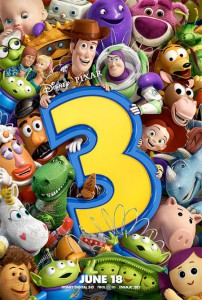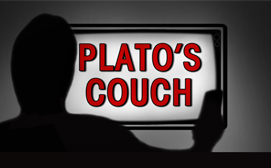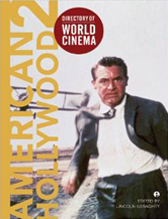
ANALYSIS: Toy Story 3: The Sex/Gender Debate
Despite the overwhelmingly positive chorus of support for Pixar’s latest animated feature, Toy Story 3 has found its way into the news recently amidst claims regarding the film’s negative and potentially harmful depiction of its characters. Amongst the most vocal of critics is MS. Magazine blogger Natalie Wilson who, in her piece ‘Third Time Still Not the Charm for Toy Story’s Female Characters‘ argues that the film “perpetuates damaging gender and sexuality norms”.
 Despite the article’s acknowledgement that Toy Story 3 is both “funny and clever” and the references to the “blend of witty dialogue” and “visual feast-for-the-eyes” as key elements of appeal, Wilson remains highly critical of the film’s male-heterocentric representations, citing various misogynistic and homophobic tendencies within the narrative.
Despite the article’s acknowledgement that Toy Story 3 is both “funny and clever” and the references to the “blend of witty dialogue” and “visual feast-for-the-eyes” as key elements of appeal, Wilson remains highly critical of the film’s male-heterocentric representations, citing various misogynistic and homophobic tendencies within the narrative.
While I would defend Wilson (a fellow academic and someone equally passionate about issues of gender and sexuality) against the many and all-too-familiar criticisms that she is simply ‘reading too much into this – it’s just a movie’, I felt prompted to engage in this debate on the basis of her selection and analysis of the film.
In an open letter to the author I wrote:
‘Of all the films worthy of this kind of important feminist analysis (and no I don’t see the ‘f’ word as something to be feared like some of the earlier commentators), I can’t help but wonder why you’ve selected Toy Story 3 for this level of scrutiny. Is it the popularity of the film? Or perhaps a response to some claims regarding progressive gender subversion?
I would not dispute that the film is reflective of a widespread imbalance in terms of gender representation – but that is endemic to Hollywood and not particular to this case study. (Not that that excuses anything, mind you)
And true, the film falls back upon stereotypical images of femininity (and also masculinity I would add) for the purpose of humour and characterisation. But I think you’ve carefully (or carelessly) elided certain ambiguities in your analysis of the film that may undo the potency of your claims.
For instance, while you are quick to point out the hyper-femininity of the Barbie character and the explicit campness of Ken, the film ultimately suggests that Barbie’s ‘traditional’ gender traits are a ruse – perhaps in the sense of Judith Butler’s ‘performativity’ – which she deploys and then sheds in order to facilitate the escape of the other toys. In that context couldn’t we also read the humour derived from Barbie’s intelligent dialogue as coming not from the point of ‘oh, how funny-the dumb blonde said something smart’ but rather, ‘oh look how we’ve been duped by our own gendered perceptions’.
This same aspect of gender performativity could also apply to Ken who appears to shed the signifiers of his camp persona when not around the new toys (ie. at the card game). And what are we to make of the film’s penultimate escape when Ken appears to reject his hyper-masculine misogynist self (as Lotso’s right-hand man) in preference of a potential relationship with Barbie.
Couldn’t we also interpret the removal of Lotso (the Villainous Patriarch) from the Day Care Centre at the film’s conclusion, and the installation of more shared system of power as pointing a way forward from their previous phallocentric domination?
I am not suggesting in all of this that Toy Story 3 is necessarily a progressive film but rather that the film’s gender representations are far more ambiguous than your article appears willing to acknowledge.
As for labelling the film “damaging”, I would think that a film such as The Twilight Saga: Eclipse (which demonstrates a paranoid fear of female sexuality and encourages women to reject their own agency in preference of abusive relationships) or Sex & the City 2 (which deploys a pseudo-feminist pre-text as a cover for a host of racial and cultural insensitivities) as far more ‘destructive’ along the lines of gender and sexuality.’
While it is not my intention to undermine these forms of feminist analysis, I can’t help but feel that at the present time, when there are so many other, and far more ‘damaging’ representations, that this type of article may actually prove counter-productive, at best to film criticism, and at worst to feminist explorations of cinema. The last thing the ‘f’ word needs right now is a bad reputation.





Not on the same topic, but about the same film. When did the archetypal enemy become a fascist dictator again? Or has it been like this for ages and i haven’t noticed. I thought we were scared of terrorist cells.
Has the fascist dictator ever gone out of style? Or maybe the screenwriters just figured that calling the bad guy Osama Bin Lotso would be too obvious?
Good show. Agree with you entirely – there are SO many Hollywood films much more worthy of feminist film criticism.
The greatest film Pixar have ever made.
It’s certainly one of the best films Pixar have produced. I think a strong case could be made for any of the Toy Story films.